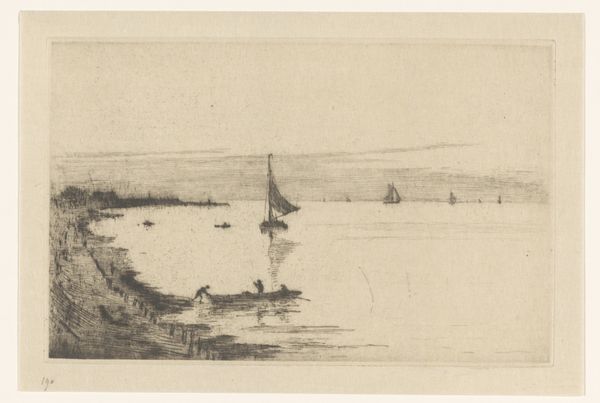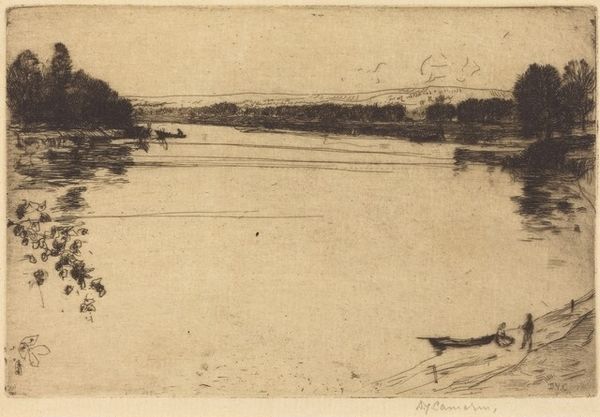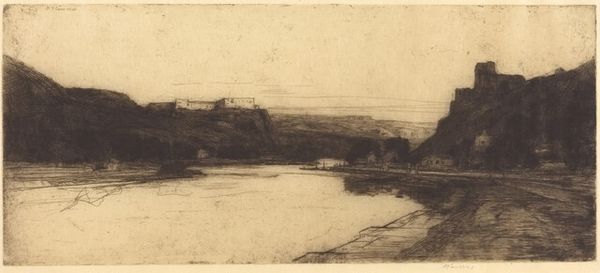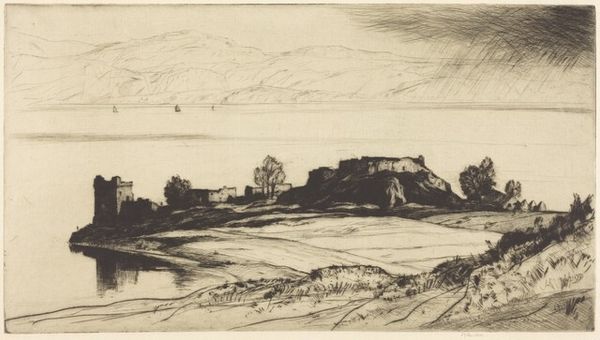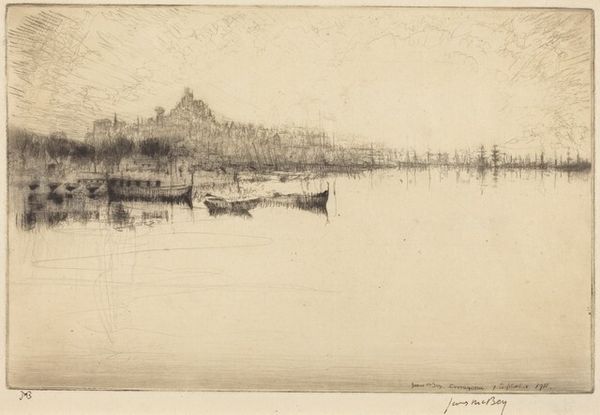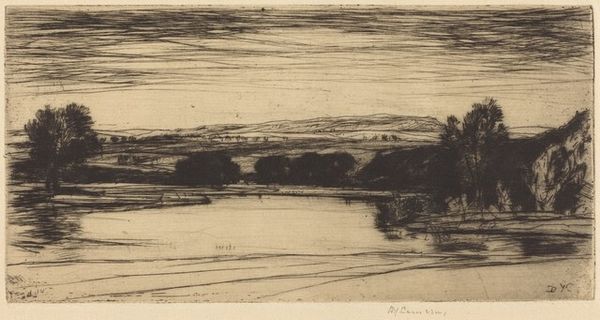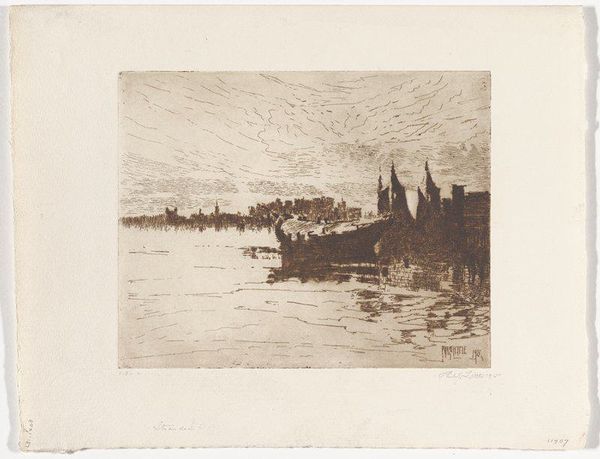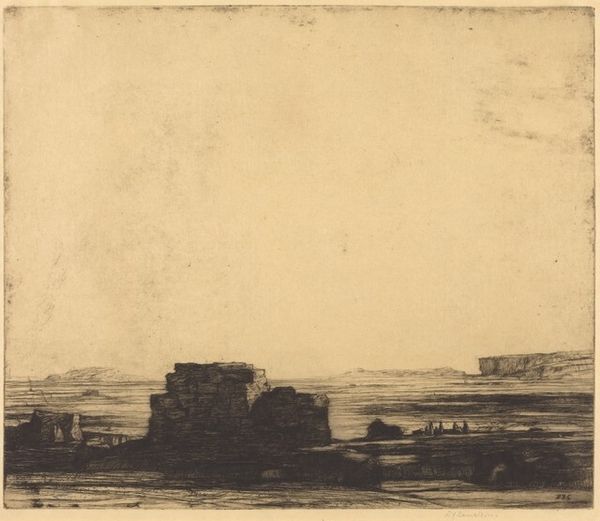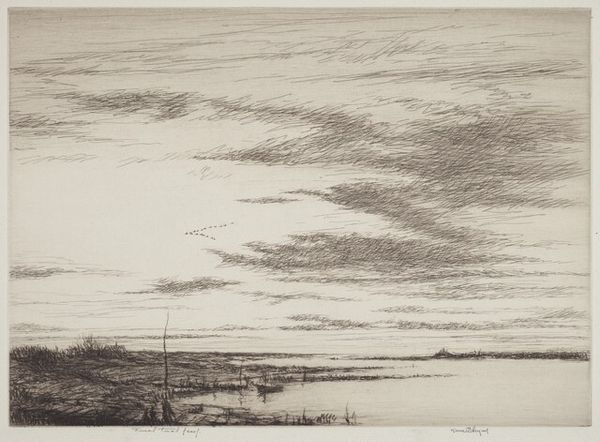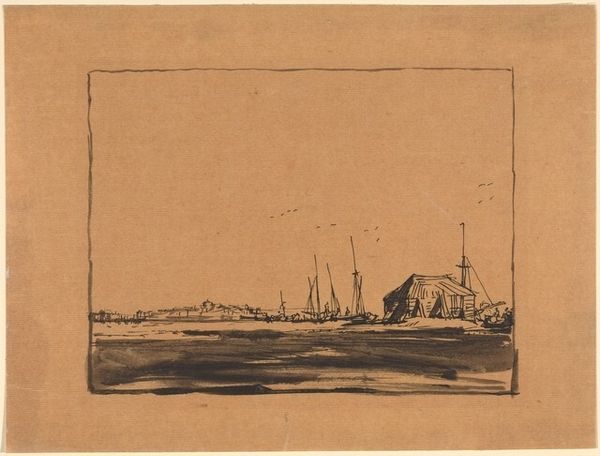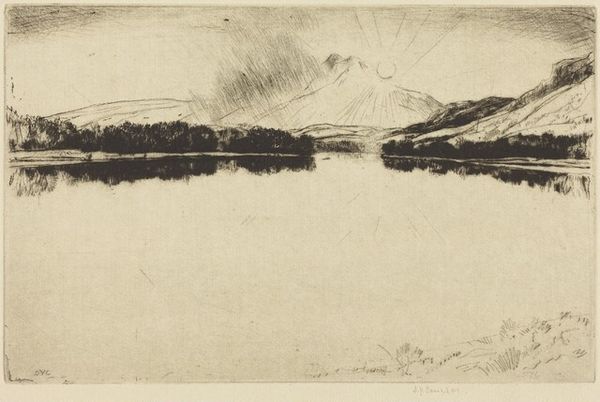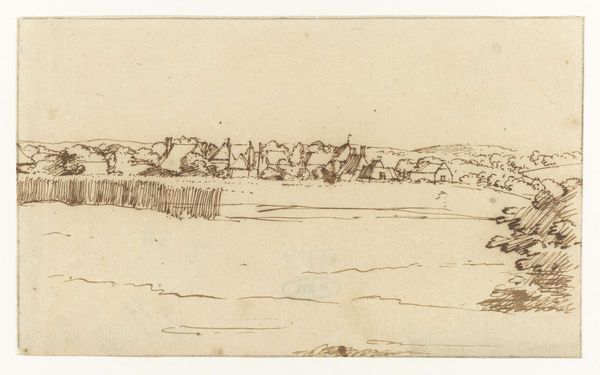
print, etching
# print
#
etching
#
landscape
Copyright: National Gallery of Art: CC0 1.0
Curator: Here we have "River in Flood," an etching crafted by David Young Cameron in 1893. What strikes you initially about it? Editor: There's an immediate sense of stillness despite the implied drama of the title. The muted tones create this subdued, almost melancholic mood. It’s really quite captivating. Curator: I'm interested in your response, especially considering the technical skill at play here. Notice the artist's layering of etched lines to generate such atmospheric depth, particularly in the clouds looming above. Editor: Yes, that dense hatching definitely gives weight to the idea of potential devastation and change. Think about what the "flood" really means. Who does the flooded river affect? Curator: That's an excellent point about its sociopolitical dimensions. At its surface, the flood becomes an event or experience of nature as sublime terror. The buildings clustered on the banks become monuments to human powerlessness when faced with disaster. Editor: I also find it worth considering whether Cameron uses this composition to reflect larger anxieties of the fin de siècle—a period grappling with societal shifts and anxieties about the future. Catastrophic imagery could then stand as a proxy for larger fears. Curator: Such interpretations hold significant value. However, when looking closer at Cameron’s technique—the deliberate restraint in details, the contrast between light and shadow—I also see a meticulous study in composition itself. He almost simplifies it to the bare essentials. Editor: It is important to observe how even depictions of "nature" become mediated through a painter’s hand, shaped by artistic conventions and ideologies. A scene of a “river” holds countless narratives about labor, industrialization, gender dynamics, and so much more, all absent here! Curator: Indeed, it’s through this convergence of formal execution and implied narrative that an etching from 1893 continues to spark debate. The emotional ambiguity he creates allows us to examine our feelings about the natural world—a constant and potentially overwhelming presence. Editor: It becomes about the human-nature relationship, particularly where disruptions to environmental harmony have significant social consequences. It’s about collective futures after all.
Comments
No comments
Be the first to comment and join the conversation on the ultimate creative platform.
